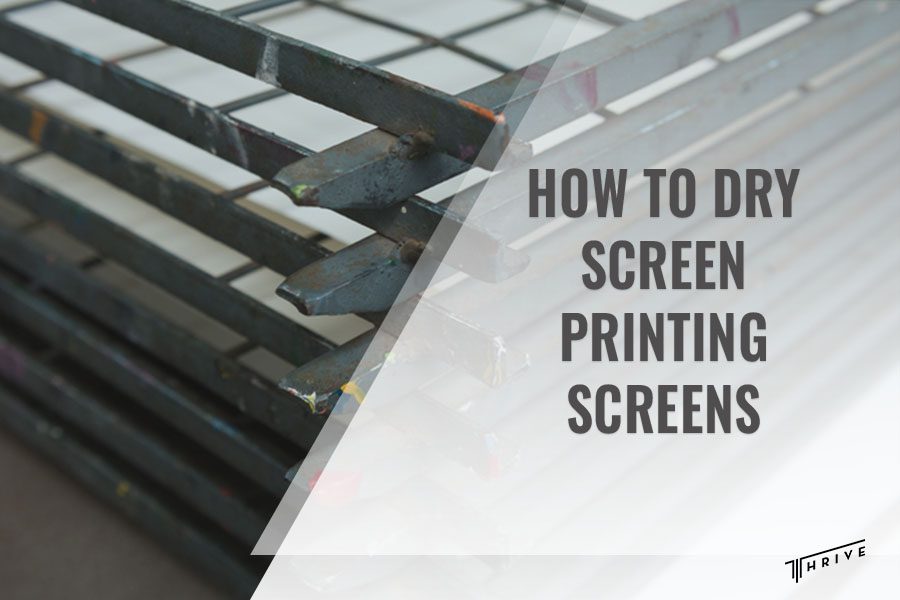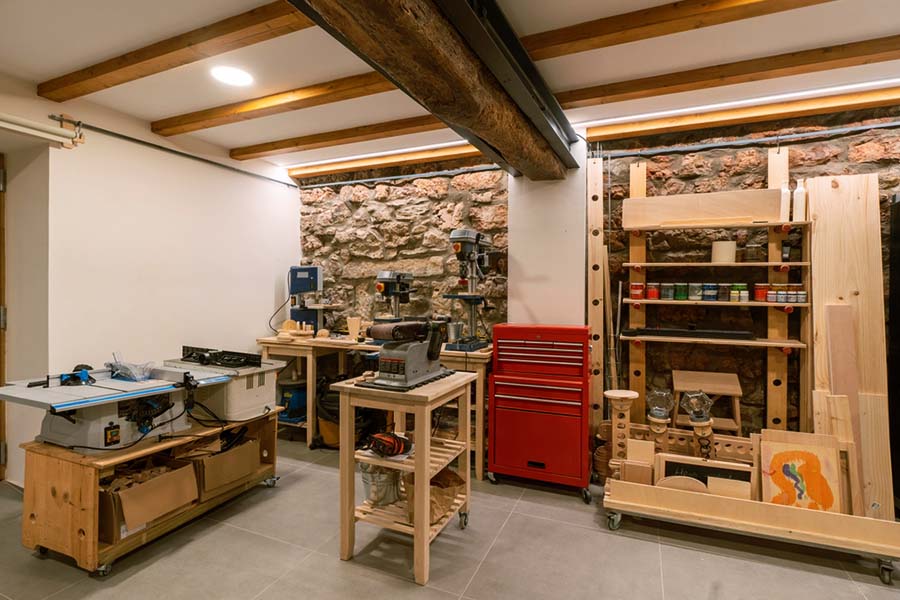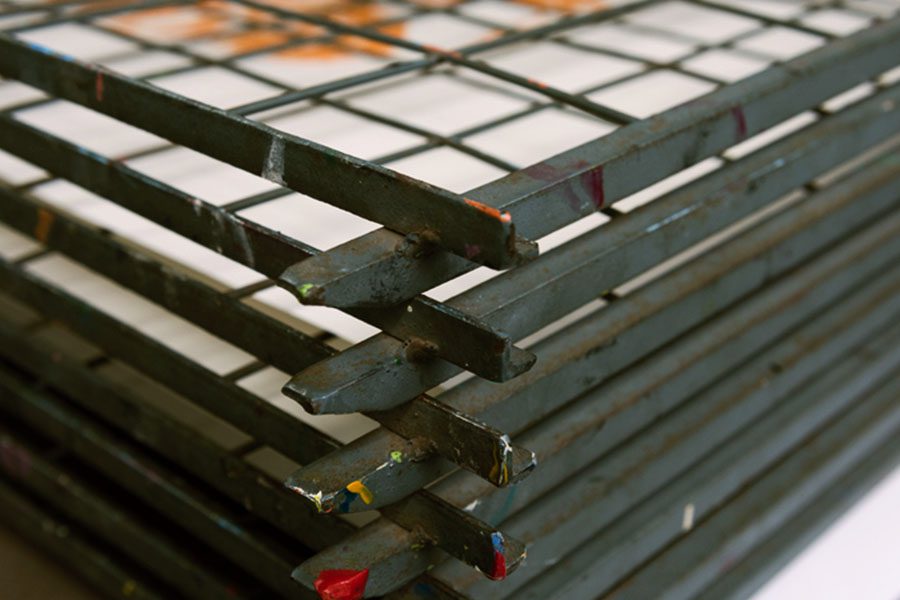
Every step of the screen printing process is vital for achieving high-quality prints, proper drying included. For this, you must learn how to dry screen printing screens. You can dry printing screens in several ways depending on how many there are and how fast you need them to dry.
Also, the drying methods may vary depending on the space available. Drying screen printing screens at home will differ from the larger facilities of professional printing companies like ours at Thrive Screen Printing.
Let’s dive in and find out how to dry printing screens properly!
How to Dry Screen Printing Screens
Properly drying screen printing screens is a vital part of the prepress process. Before you begin drying, you must ensure that you have the ideal drying conditions for your screens to dry properly.
However, many printers gloss over the considerations for doing it properly, which leads to their printing screens not drying correctly.
As one of the leading printing companies at Thrive Screen Printing, we know the importance of drying printing screens. So, if you are searching for high-quality wholesale screen print offers, we pay special attention to every step of the screen printing process.
When drying screen printing screens, keep in mind the following factors:
- Ensuring proper lighting
- Protecting the screen from lint and dust
- Screen drying temperature
- Screen drying in a drying cabinet
- Screen drying on a drying rack
- Proper airflow during drying

Ensuring proper lighting
The first factor to remember when drying a coated screen is to filter out UV radiation appropriately. Your coated screen must be in a dark area to avoid UV wavelengths hitting the emulsion and pre-exposing the stencil.
The exposure process will start if the screen is introduced to UV radiation. This means you will need to reclaim the screen and start from scratch.
Protecting the screen from lint and dust
When coating a printing screen with emulsion, it is crucial to ensure no dust or lint sticks to it. If lint or any dust particles stick to the emulsion while it’s still wet, it can cause ink spots to appear on the final print.
Drying printing screens horizontally
When drying, it is crucial to lay the coated screen horizontally with the squeegee side up. This way, the emulsion will level out on the print side and be thicker than on the screen’s squeegee side.
Gravity will pull the emulsion to the print screen. Because the emulsion is in front of the mesh, there will be less possibility of mesh marks or other imperfections appearing in the prints.
Drying cabinet vs. drying rack
The best way to ensure nothing sticks to the coated screens is to dry them in a closed-screen drying cabinet. You may also use a drying rack if you do not have a drying cabinet.
Just remember to keep the drying area clean and regularly wipe down the surfaces that collect dust.
Screen drying temperature
The recommended temperature for drying emulsion-coated screens is about 110°F (40°C). Higher temperatures than this may damage the final print because the diazo sensitizer in the emulsion is sensitive to high heat.
The diazo sensitizer is what allows the coating to cure properly during exposure. All temperatures above freezing will start the decay of the diazo sensitizer. The higher the temperature, the faster it will decay, so only up to 110°F is ideal for drying screens.
Proper airflow during drying
Another crucial thing is to ensure proper airflow in the area where you are drying the printing screens. With proper airflow, the moisture will have somewhere to go, and the drying process will last much longer.
How Long Do Screen Printing Screens Take to Dry?
The time it takes for screen printing screens to be fully dry depends on the environmental conditions and the coating thickness. You will know your print screen is dry when all the moisture is completely removed from the emulsion and it turns solid.
Whether you run a screen print shop or are drying a screen at home, you may use heat and a dehumidifier. Usually, a coated screen should be dry to the touch after an hour at 70°F (21°C) with relative humidity of 50%.
In contrast, if the drying temperature is between 100-110°F with 20% humidity, the screen printing screens may dry in about 15-20 minutes.

How to Dry Screen Printing Screens at Home
You can also dry your print screens at home, but if you let the air dry, they will need more time to fully dry. Now, you may be wondering how to speed up the process, and often, the first question that pops up is, can you use a hair dryer for screen printing?
The answer is yes. You may use a hair dryer to speed up the drying process for your home printing screens. If you are not in a hurry, you may leave the printing screen near a heat source in a room in your home.
If you have drying racks at home, you can put a fan behind them and let the printing screens dry.
Conclusion
You can use many methods to learn how to dry screen printing screens. As we mentioned, screen printing companies use drying cabinets for large-scale production.
But you can quickly dry your screen printing screens even at home. You can do this by letting them air dry or using a hair dryer or a fan to speed up the process.

Robert Fisher is the founder and CEO of Thrive Screen Printing and brings extensive experience in the screen printing and fulfillment industry.

